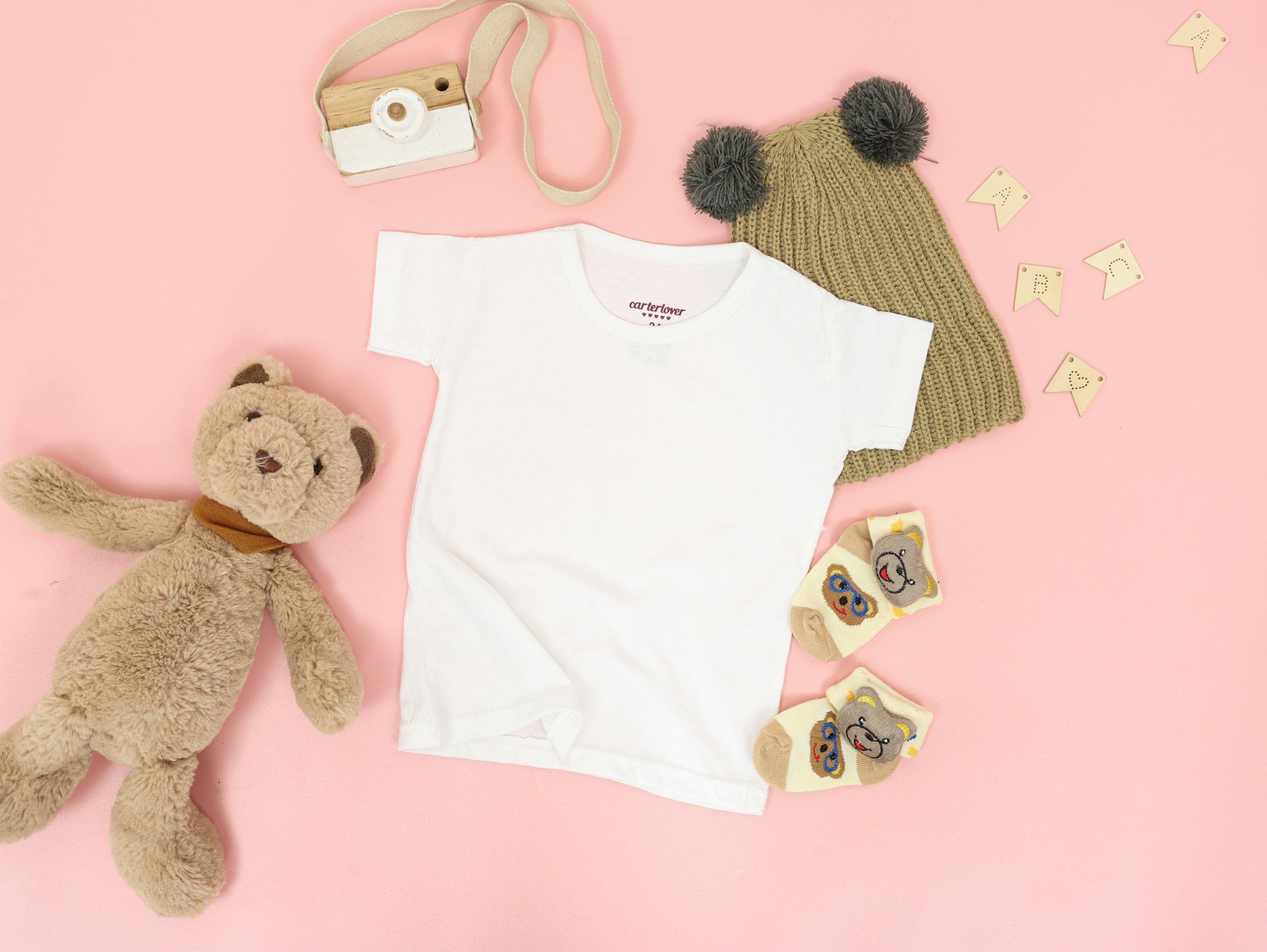How Children's Apparel Brands Can Leverage Onsite Search to Increase Conversions with Agentic Commerce Solutions

Key Takeaways
- Children's apparel faces a severe conversion crisis with 0.8-1.4% conversion rates compared to 2.9-3.3% fashion averages, representing 97-98% visitor abandonment despite a $211.57 billion market growing to $366.72 billion by 2032
- Onsite searchers convert at 2-6x higher rates than non-searchers, with data showing 4.63% versus 2.77% conversion and up to 40% of revenue coming from just 30% of visitors who use search functionality
- Agentic commerce will transform $3-5 trillion globally by 2030 as autonomous AI agents act on behalf of shoppers, with traffic from GenAI browsers increasing 4,700% year-over-year
- AI personalization creates compound conversion gains when combined with search, with AI chat interactions increasing conversions 4x (12.3% vs 3.1%) and purchases completing 47% faster with AI assistance
- Children's apparel requires specialized AI solutions that understand complex parental queries like "organic cotton dress that won't shrink for 3T" and predict sizing needs as children grow rapidly
- Brand safety is non-negotiable for children's products, requiring multi-layered compliance frameworks that maintain COPPA adherence, FTC guidelines, and safety-first recommendations
Children's apparel brands stand at a critical crossroads. While the global market shows 7.17% annual growth, conversion rates languish far below industry averages. The gap between market opportunity and actual performance creates massive revenue leakage—but it also represents an extraordinary opportunity for brands that master the convergence of advanced onsite search and agentic commerce solutions. By implementing AI agents for eCommerce, children's apparel brands can finally address the unique challenges that have kept conversion rates suppressed: sizing uncertainty, fit concerns without try-on capability, rapidly changing size needs, and material safety questions.
Why Average Ecommerce Conversion Rate by Industry Matters for Children's Apparel Retailers
Current Conversion Rate Benchmarks in Apparel
The numbers paint a stark picture. Children's and infant clothing categories suffer from conversion rates of 0.8-1.4%, significantly trailing the overall fashion average of 2.9-3.3% and women's clothing at 3.6%. This means 97-98% of visitors leave without purchasing, representing enormous untapped potential in a booming market.
The conversion gap becomes even more troubling when examined against broader retail performance. Top-performing fashion brands achieve conversion rates above 5%, while specialized categories like athletic wear see rates approaching 4-6%. Children's apparel consistently underperforms across all segments.
Why Children's Clothing Faces Unique Conversion Challenges
Unlike other fashion categories, children's apparel contends with specific friction points that traditional e-commerce fails to address:
Sizing Complexity:
- Inconsistencies across brands make size selection uncertain
- Rapid growth means sizing needs change every 3-6 months
- Age-based sizing doesn't account for individual child variations
- Parents frequently need multiple sizes simultaneously for growing children
Fit Uncertainty Without Try-On:
- No virtual try-on capabilities for children's body types
- Difficulty assessing comfort and mobility in product photos
- Limited understanding of how fabrics behave during active play
- Returns costs discourage experimental purchases
Safety and Material Concerns:
- Parents research fabric safety, chemical treatments, and choking hazards
- Organic and hypoallergenic requirements for sensitive skin
- Durability concerns for items subject to heavy wear
- Washing and care requirements for busy parents
These challenges explain why children's apparel conversion rates lag so dramatically—and why intelligent search solutions that address these specific pain points deliver outsized returns.
The Role of Product Discovery in Driving Children's Apparel Conversions
How Parents Search for Children's Clothing Online
Parent shopping behavior differs fundamentally from traditional fashion consumers. They rarely search for specific brand names or style identifiers. Instead, searches reflect practical concerns and contextual needs:
Common Parent Search Patterns:
- "Durable waterproof jacket for active 5-year-old boy"
- "Organic cotton dress that won't shrink for 3T"
- "School uniform pants that fit slim toddlers"
- "Non-slip footie pajamas for crawling baby"
- "Sun-protective swimwear for sensitive skin 18-24 months"
Traditional keyword search fails these queries completely. Parents need conversational, contextual understanding that interprets intent, filters by age-appropriate sizing, and surfaces relevant safety features.
Common Discovery Friction Points in Kids' Apparel
Up to 30% of visitors use internal site search, but most children's apparel sites deliver frustrating experiences:
Zero-Result Experiences: Generic keyword matching returns no results for natural language queries, forcing parents to manually browse entire catalogs.
Irrelevant Filter Options: Size filters organized by measurements instead of age ranges; style filters that don't account for activity level or occasion.
Mobile Shopping Challenges: Parents often shop while managing children, requiring quick, efficient mobile experiences that most sites don't provide.
Cross-Category Discovery Gaps: Difficulty finding coordinating items or complete outfit solutions; inability to shop for multiple children with different size needs simultaneously.
These friction points explain why searchers convert 2-3x higher than non-searchers when search actually works—and why broken search drives massive abandonment.
Site Search Optimization: The Foundation of Better Product Discovery
Essential Site Search Features for Apparel Sites
Advanced onsite search capabilities form the foundation for conversion improvement. Leading children's apparel brands implement sophisticated search features that dramatically improve relevance:
Autocomplete with Product Previews: Suggests complete queries while showing product thumbnails, enabling visual confirmation before clicking. Carter's implementation of autocomplete with product previews demonstrates how this feature significantly boosts engagement.
Intelligent Query Interpretation:
- Synonym handling ("toddler" = "2T-5T", "baby" = "0-24 months")
- Typo tolerance for mobile shoppers typing quickly
- Natural language processing for conversational queries
- Context awareness based on browsing history
Faceted Search and Filtering:
- Age-based size filters instead of measurement-based
- Material and safety filters (organic, hypoallergenic, flame-resistant)
- Occasion and activity filters (school, play, sleep, special events)
- Gender-neutral options alongside traditional categories
Visual Search Capabilities: Parents can upload photos of outfits or items they like, with AI identifying similar styles, colors, and patterns in the catalog.
How to Audit Your Current Search Performance
Measuring search effectiveness reveals optimization opportunities. Track these critical metrics:
Search Engagement Metrics:
- Search usage rate (percentage of visitors using search)
- Search-to-purchase conversion rate (4.63% benchmark for effective search)
- Zero-result rate (queries returning no products)
- Search refinement rate (percentage of users modifying initial queries)
Revenue Attribution:
- Revenue from search users (target: 40%+ of total revenue)
- Average order value for search users vs. non-search users
- Cart abandonment rates comparing search and non-search sessions
Amazon's conversion rate jumps 6x when visitors use search (2% to 12%), while Walmart sees 2.4x improvement. These benchmarks demonstrate the enormous opportunity in search optimization.
Agentic Commerce Solutions: AI Agents That Transform Shopping Experiences
What Makes AI Agents Different from Traditional Search
Agentic commerce represents a fundamental shift beyond traditional search. Instead of passive keyword matching, autonomous AI agents act on behalf of shoppers, making intelligent decisions and taking proactive actions throughout the shopping journey.
Traditional Search Limitations:
- Requires precise keywords or exact product names
- Returns static result lists requiring manual filtering
- No understanding of shopping context or intent
- Cannot anticipate future needs or make proactive suggestions
Agentic Commerce Capabilities:
- Understands conversational, natural language queries
- Learns from browsing behavior and purchase history
- Proactively suggests products based on child's growth stage
- Automates routine repurchases while personalizing discovery
- Provides real-time answers to fit, safety, and care questions
Research shows 60% of shoppers expect to use AI agents within 12 months, while 44% who've tried AI-powered search now prefer it as their primary method.
How Agentic Commerce Works in Children's Apparel
For children's apparel, agentic commerce solves the category's most persistent challenges through intelligent, context-aware assistance:
Size Prediction and Growth Tracking: AI agents learn each child's growth patterns, proactively recommending the next size up at appropriate intervals and suggesting size ranges that accommodate 3-6 month growth.
Personalized Product Recommendations: Understanding that a parent with an active outdoor-loving child needs durable, stain-resistant fabrics versus dress-up clothing for special occasions.
Automated Replenishment: Recognizing that socks, underwear, and seasonal basics need regular replacement, suggesting reorders before items wear out.
Safety-First Guidance: Automatically filtering for age-appropriate items, highlighting safety features, and answering specific material and compliance questions.
The impact is measurable: AI personalization increases revenue by 40% for top performers, while returning customers using AI spend 25% more.
Conversion Rate Optimization Tools Every Children's Apparel Brand Needs
Must-Have CRO Stack for Apparel Retailers
Effective conversion optimization requires a comprehensive technology stack working in concert:
Analytics and Behavioral Intelligence:
- Heatmap and session recording tools revealing friction points
- Funnel analysis identifying abandonment stages
- Cohort analysis tracking customer lifetime value by acquisition source
Testing and Experimentation Platforms:
- A/B testing for layout, messaging, and feature variations
- Multivariate testing for complex page elements
- Multi-armed bandit algorithms for dynamic optimization
Personalization Engines:
- AI-driven product recommendations tailored to individual preferences
- Dynamic content adaptation based on visitor behavior
- Email and browse abandonment recovery automation
Search and Discovery Solutions:
- Advanced autocomplete and query suggestion
- AI-powered search agents understanding natural language
- Visual and voice search capabilities
Measuring the Impact of Search Improvements
Quantifying search impact requires isolating its contribution from other optimization efforts:
Incrementality Testing Methods:
- Holdback testing comparing search-enabled vs. search-disabled visitor cohorts
- Geographic testing rolling out search improvements by region
- Temporal analysis measuring before/after performance with controlled baselines
Attribution Models:
- First-touch attribution for discovery influence
- Last-touch for direct conversion impact
- Multi-touch to understand full customer journey
- Time-decay models accounting for consideration cycles
Companies excelling at personalization generate 40% more revenue than competitors, with search users accounting for roughly 40% of total revenue despite representing only 30% of traffic.
Using Google Search Console to Improve Onsite Search Strategy
Extracting Search Intent from Google Search Console Data
External search behavior provides critical insights for optimizing internal site search. Google Search Console reveals what customers search for before arriving at your site:
Query Analysis for Intent Mapping:
- Long-tail queries showing specific needs ("organic sleep sack 6-12 months")
- Question-based searches revealing information gaps ("how to measure toddler for jacket")
- Brand comparison queries indicating competitive research phase
- Seasonal trends in product interest and search volume
Landing Page Performance:
- High-impression, low-click-through pages need better titles and descriptions
- Pages with strong external search performance should be prioritized in internal search results
- Bounce rates from external search inform content quality and relevance
Aligning External and Internal Search Strategies
Create consistency between how customers find your site and how they navigate once they arrive:
Keyword Integration:
- Incorporate successful external search terms into internal search autocomplete
- Optimize product titles and descriptions with language customers actually use
- Build content addressing common question-based queries
Content Gap Analysis:
- Identify high-volume external searches with no corresponding internal results
- Create category pages and filters matching external search intent
- Develop size guides and educational content answering frequent questions
Structured Data Implementation:
- Schema markup for product details enabling rich snippets
- FAQ schema for common parent questions
- Review schema building trust through social proof
This alignment ensures seamless experiences from discovery through purchase, reducing friction that drives abandonment.
How AI Agents Solve the Unique Challenges of Children's Apparel Shopping
Answering Complex Parent Questions at Scale
Parents have specific, often sensitive questions that traditional search can't address. AI agents provide personalized, contextual answers that build confidence:
Fit and Sizing Guidance:
- "Will this 3T dress fit my tall, slim daughter who usually wears 2T?"
- "These pants run large—should I size down for my average-build 5-year-old?"
- "Can I order this now for my 8-month-old to wear in 2 months?"
Safety and Material Concerns:
- "Is this fabric safe for babies with eczema?"
- "Does this pajama set meet flame resistance standards?"
- "Are there any small parts that could be choking hazards for my toddler?"
Care and Durability Questions:
- "Will this shrink in the wash? My son is between sizes."
- "How well do these pants hold up to daily playground wear?"
- "Can this be machine washed and dried, or does it need special care?"
AI sales agents create a safe space where shoppers can ask personal questions they've always wanted to but never could, building confidence and removing hesitation.
Building Trust Through Personalized Guidance
Children's apparel purchases involve emotional considerations beyond pure functionality. Parents want clothing that reflects their values, keeps children comfortable and safe, and withstands real-world use.
Personalized Shopping Journeys:
- Learning that a parent prioritizes organic materials and suggesting appropriate collections
- Remembering that a child has sensory sensitivities and filtering for soft, tag-free options
- Understanding that a family needs budget-friendly basics and highlighting value packs
Proactive Recommendations:
- Suggesting seasonal transitions ("Your child will need light jackets soon for fall weather")
- Identifying wardrobe gaps ("You have shorts and t-shirts, but no swim gear for summer")
- Bundling complete outfits removing decision fatigue for busy parents
This level of personalized guidance directly addresses the conversion challenges unique to children's apparel, transforming uncertainty into confidence.
Bundling and Upsell Strategies Powered by Intelligent Search
How AI Identifies Natural Bundle Opportunities
Children's apparel has inherent bundling advantages that AI can exploit for increased average order value:
Outfit Completion: When a parent adds a dress, AI suggests matching leggings, cardigan, and hair accessories creating a complete look.
Size-Up Bundles: Offering current size plus next size up at a discount, acknowledging rapid growth patterns.
Sibling Matching: Identifying opportunities for coordinating outfits across different ages when parent shops for multiple children.
Seasonal Capsules: Creating curated collections of complementary pieces that work together throughout a season.
Activity-Based Bundles: Grouping items for specific purposes (school starter pack, summer camp essentials, holiday outfit sets).
Increasing AOV Without Hurting Conversion
The key to successful bundling is value creation, not forced upselling. AI bundling increases both conversion and average order value by making shopping easier:
Intelligent Timing:
- Present bundle suggestions after primary item selection, not before
- Offer genuine savings that justify larger purchases
- Highlight convenience benefits ("everything you need in one order")
Relevance Over Revenue:
- Recommend only genuinely complementary items
- Respect budget signals and price sensitivity
- Provide easy bundle customization and removal options
Social Proof Integration:
- Show which items are "frequently bought together"
- Highlight reviews mentioning specific combinations
- Feature customer photos showing complete outfits
Data shows purchases complete 47% faster with AI assistance while increasing basket sizes, proving that intelligent recommendations improve both efficiency and revenue.
Ensuring Brand Safety and Compliance in AI-Powered Search
Compliance Risks in Children's Product Marketing
Children's products face stricter regulatory scrutiny than general merchandise. AI implementations must maintain rigorous compliance:
COPPA (Children's Online Privacy Protection Act):
- Verifiable parental consent before collecting data from children under 13
- Transparent disclosure of data collection practices
- Limitations on behavioral targeting for child-focused products
CPSIA (Consumer Product Safety Improvement Act):
- Mandatory safety standards for children's products
- Proper disclosure of materials, testing, and certifications
- Age-grading accuracy to prevent inappropriate products reaching wrong age groups
FTC Advertising Guidelines:
- Truthful product claims about safety, materials, and performance
- Clear disclosure of sponsored content and influencer partnerships
- Accurate representation of product features and benefits
How to Maintain Control Over AI Agent Responses
Brand safety requires a multi-layered approach built into AI systems from the ground up:
Input Validation:
- Filtering inappropriate queries and topics
- Detecting potential compliance risks in customer questions
- Escalating sensitive topics to human review
Response Control:
- Pre-approved language for safety-related claims
- Restricted vocabulary preventing unsupported product benefits
- Brand voice consistency checking before response delivery
- Factual accuracy verification against product databases
Continuous Monitoring:
- Real-time tracking of all AI interactions
- Automated flagging of potential compliance violations
- Regular audits of response quality and appropriateness
- Feedback loops for continuous improvement
Envive's proprietary approach ensures zero compliance violations through tailored models, red teaming, and consumer-grade AI safety protocols.
Measuring Success: KPIs for Search-Driven Conversion Improvement
Beyond Conversion Rate: Comprehensive Search Metrics
Effective measurement requires tracking multiple performance indicators:
Search Performance Metrics:
- Search usage rate: Percentage of visitors using internal search (benchmark: 25-35%)
- Zero-result rate: Queries returning no products (target: <5%)
- Search refinement rate: Users modifying initial queries (lower indicates better relevance)
- Click-through rate: Percentage clicking search results (target: >50%)
Conversion Funnel Metrics:
- Search-to-cart rate: Search users adding products to cart
- Search-to-purchase rate: Ultimate conversion for search users (benchmark: 4.63%)
- Time-to-conversion: Speed from search to purchase for converting users
- Cart abandonment rate: Comparing search users to non-search users
Revenue Impact Metrics:
- Revenue from search: Target 40%+ of revenue from search users
- Average order value: Search users vs. non-search users comparison
- Customer lifetime value: Long-term value of search-acquired customers
- Return on investment: Revenue increase vs. search optimization costs
Implementation Roadmap: From Legacy Search to Agentic Commerce
Phase 1: Audit and Baseline
Establish current performance and identify optimization opportunities:
Current State Assessment:
- Measure existing search usage, conversion rates, and revenue contribution
- Identify top-performing and worst-performing search queries
- Document zero-result queries and common search refinements
- Analyze mobile vs. desktop search behavior differences
Gap Analysis:
- Compare your metrics to industry benchmarks
- Identify specific friction points in search experience
- Assess data quality and catalog completeness
- Evaluate technology stack capabilities and limitations
Priority Definition:
- Focus on high-impact, quick-win improvements first
- Identify unique children's apparel requirements (size complexity, safety concerns)
- Determine budget constraints and resource availability
Phase 2: Optimize Traditional Search
Implement foundational search improvements before adding AI:
Technical Enhancements:
- Implement autocomplete with product previews
- Add synonym handling for children's apparel terms
- Improve mobile search experience and speed
- Enhance filtering with age-based and activity-based options
Content Optimization:
- Enrich product data with attributes parents actually search for
- Create comprehensive size guides with age ranges and measurements
- Add safety certifications and material information to product details
- Build category pages matching common parent search intents
Performance Monitoring:
- Establish dashboards tracking key search metrics
- Set up automated alerts for search issues (high zero-result rates)
- Create regular reporting on search contribution to revenue
Phase 3: Layer in AI Agents
With foundational search optimized, add intelligent AI capabilities:
AI Search Agent Implementation:
- Deploy natural language processing for conversational queries
- Implement personalization based on browsing and purchase history
- Add predictive recommendations for size progression
- Enable visual and voice search capabilities
AI Sales Agent Integration:
- Provide real-time answers to fit, safety, and care questions
- Offer intelligent bundling and outfit completion suggestions
- Create automated replenishment reminders for consumables
- Deliver proactive size-up recommendations based on growth patterns
Continuous Learning and Optimization:
- Collect feedback on AI recommendations and responses
- Fine-tune models based on actual conversion outcomes
- A/B test different AI approaches and response styles
- Scale successful implementations across entire catalog
Envive's platform integrates seamlessly into existing systems and drives measurable performance lift from day one.
Why Envive Delivers Results for Children's Apparel Brands
Children's apparel brands need more than generic AI tools—they require specialized solutions that understand the category's unique challenges. Envive's agentic commerce platform combines advanced search capabilities with intelligent sales agents specifically designed to address the conversion barriers that keep children's apparel rates below industry averages.
Built for Brand Safety and Compliance: Children's products demand rigorous safety protocols. Envive's proprietary 3-pronged approach ensures every recommendation maintains COPPA compliance, follows FTC guidelines, and prioritizes child safety above all else. The platform delivered zero compliance violations for Coterie while handling thousands of sensitive parent questions about baby products.
Solving Children's Apparel-Specific Challenges: Unlike generic search tools, Envive understands contextual complexity of children's clothing shopping:
- Size Prediction Intelligence: Learning growth patterns to recommend appropriate current and future sizes
- Safety-First Recommendations: Automatically highlighting age-appropriate items, materials, and safety certifications
- Conversational Query Handling: Understanding natural parent language like "durable play clothes for active toddler"
- Bundling Optimization: Identifying outfit completion and sibling matching opportunities that increase AOV
Measurable Performance Impact: Envive delivers results from day one. The platform helped Spanx achieve 100%+ conversion rate increase with $3.8M in annualized incremental revenue, while Supergoop saw 11.5% conversion rate improvement generating $5.35M in annualized incremental revenue. For children's apparel brands struggling with 0.8-1.4% conversion rates, Envive's proven ability to drive 3-4x conversion lift represents transformational revenue potential.
Rapid Implementation Without Technical Overhead: Most AI implementations require months of development and specialized expertise. Envive's platform integrates quickly with major e-commerce platforms including Shopify, BigCommerce, and Magento, typically achieving meaningful conversion improvements within 2-4 weeks. The system learns from your product catalog, customer reviews, and order data to deliver personalized experiences that feel native to your brand.
Complete Brand Control: With complete control over agent responses, brands can craft brand magic moments that foster lasting customer loyalty. Every interaction maintains your brand voice while delivering the personalized, helpful guidance that converts uncertain browsers into confident buyers.
For children's apparel brands ready to transform static product catalogs into adaptive, conversational shopping experiences, Envive delivers specialized capabilities needed to capture market share in the competitive kids' clothing space.
Frequently Asked Questions
What is the average ecommerce conversion rate for children's apparel brands?
Children’s and infant clothing convert around 0.8–1.4%, well below the overall fashion average of 2.9–3.3% and 3.6% for women’s clothing. Sizing uncertainty, rapid growth, and material-safety concerns all depress conversion—but they’re also where search and AI shine. Searchers convert at 4.63% vs 2.77% for non-searchers, and AI chat can boost conversions 4X (12.3% vs 3.1%), making 3–5% conversion a realistic target for optimized brands.
How does onsite search optimization differ from SEO?
SEO gets parents to your site; onsite search helps them find the right products on your site. SEO covers keyword research, content, backlinks, and technical optimization to win Google queries. Onsite search focuses on autocomplete, query understanding, relevance, filters, and results UX. The lines are blurring: Google Search Console reveals external demand that should inform internal search, and agentic commerce means optimizing both for humans and AI agents. For children’s apparel, that looks like SEO to capture “organic toddler clothes,” then advanced onsite search to surface the exact styles, sizes, and fabrics those parents need.
What are agentic commerce solutions and how do they work?
Agentic commerce uses autonomous AI agents to guide the full shopping journey instead of waiting for keyword searches. For children’s apparel, an agent can interpret “comfortable school clothes for active 7-year-old that don’t need ironing,” then filter for age-appropriate sizing, wrinkle-resistant fabrics, and durability. McKinsey estimates $900B–$1T in US B2C agentic revenue by 2030 and $3–5T globally. These systems blend NLP, behavioral learning, and predictive analytics to personalize experiences—driving 40% more revenue for top performers and completing purchases 47% faster.

Other Insights

Partner Spotlight: Andrea Carver Smith

Is AI a bubble — or the beginning of durable value?

Partner Spotlight: Siara Nazir
See Envive
in action
Let’s unlock its full potential — together.






